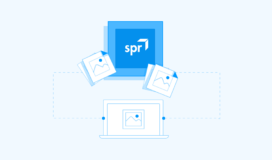Simplify Access to SAP ERP: Business Critical Data in SharePoint 2013
Many organizations face the challenge today that most of their users don’t have easy access to the business critical data hidden in their line-of-business (LOB) systems such as SAP ERP or Oracle Financials. Users are often presented with a complex user interface (UI) or inflexible business processes. This problem is enhanced by the fact that these systems are usually deployed to a limited number of users. The reality is that business users at every level of an organization need access to important data and related processes to enable them to support operations and make sound decisions.
Users who need access to the data that reside in these LOB systems often need to reach out to IT to provide this information and organize it in a particular manner. This keeps IT busy with daily mundane tasks rather then spending their energy on more strategic initiatives.
Managers in these organizations are then faced with the challenge of how to get more value out of their LOB systems by extending the reach of important business data thus improving business processes. There is a growing trend to look for collaborative solutions such as using Microsoft SharePoint instead of the complex generic interface that the LOB system might provide.
Microsoft SharePoint 2013 is a business collaboration platform of choice for many companies and provides the capabilities necessary to achieve business innovation with one unified platform that can be used for intranet, extranet as well as internet sites. This enables an organization to significantly cut costs by streamlining and improving internal processes. Having a unified platform speeds up time to market around new initiatives by allowing users to share resources, ideas, and expertise and plan projects effectively.
When it comes to LOB data from systems such as SAP ERP, SharePoint 2013 can increase the visibility of critical, accurate, and real-time business data. SharePoint 2013 also offers a number of ways to surface LOB data. Once the data is surfaced in SharePoint, Search and BI capabilities can be used to provide wider end-user functionality.
The rest of this blog and the subsequent blogs in this series will focus on the different ways to integrate SharePoint with SAP ERP, and in particular SAP HCM. I have learned from experience that no two SAP Integration projects are the same. When working on a SAP-SharePoint Integration project, there a few key principles that we have to keep in mind.
First and foremost, we need to fully understand the business process that needs integration with SharePoint. We need to make sure that project objectives are well defined before we embark on recommending a solution. High-level functional requirements as well as non-functional requirements such as security, performance requirements, supportability should be defined. User Interface (UI) requirements and the data that needs to be brought to SharePoint should be clearly defined in order to surface only the data that is needed to complete a particular process. Any workflow requirements and how users want to interact with the data (BI dashboards, etc.) should be defined as well. Last but not least, we also need to keep in mind what is the organization’s overall SAP/Microsoft roadmap. Is it going to be just a one-off project or does the architecture need to be scalable to support any future projects?
Once we understand the requirements, we need to understand the current IT landscape and infrastructure. For example in the case of SAP HCM, a customer might have a need to automate the Personnel Change Notification (PCN) process. We need to understand the current architecture to see what are the components (Standard BAPIs etc.) that might be reused. Understanding the skill set of existing IT staff (SAP resources vs. Microsoft resources) will help narrow down the correct integration mechanism. You don’t want to recommend a solution that requires heavy custom BAPI development if the organization does not have any SAP developers in house that can support that. On the other hand, you have to be careful recommending a complete Microsoft solution if the company IT staff only has SAP resources. Having said that, at the end of the day, the integration strategy should be driven by User Interface Design and User Experience requirements.
Now there are basically two different types of integration projects in MS/SAP space. One that requires little to no coding and the one that requires heavy customization using custom development.



